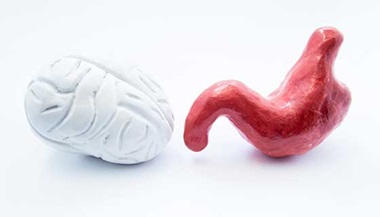Transoral Outlet Reduction
If you regain weight after gastric bypass surgery, transoral outlet reduction (TORe) can help you restart your weight loss program.
What You Need to Know
- Transoral outlet reduction is for people who have regained weight after gastric bypass surgery.
- TORe aims to reduce the size of the opening between the stomach pouch and the small intestine to slow stomach emptying and help you feel fuller longer.
- TORe is performed without incisions through the skin and it leaves no scars.
- The effects of TORe may diminish over time, and some people need to repeat the procedure in a few years.
What is transoral outlet reduction (TORe procedure)?
Transoral outlet reduction is a minimally invasive procedure that can help people who regain weight after gastric bypass surgery.
The bypass surgery creates a small pouch in the stomach and connects it to the small intestine, bypassing the rest of the stomach. Over time, the gastric outlet ― the opening between the gastric pouch and the small intestine ― can enlarge, and food will move into the small intestine faster, leaving you feeling hungry again. Studies have shown a correlation between an enlarging gastric outlet and weight gain.
TORe reduces the gastric outlet opening by accessing it through the mouth (transoral) with an endoscope (a thin flexible tube) and placing stitches (sutures) in the opening to tighten it. This slows down the emptying of food from the stomach, and it can help you feel full longer, so you eat less frequently and lose weight.
Who might need a transoral gastric outlet reduction?
People who regain weight after gastric bypass surgery may be candidates for this procedure when their body mass index (BMI) reaches or surpasses 30, which indicates obesity.
When diet and lifestyle changes do not work to restart weight loss, transoral gastric outlet reduction can help by making you feel fuller longer after eating.
This minimally invasive procedure involves much less risk than an open surgery revision of gastric bypass.
People who have transoral gastric outlet reduction can expect to lose about 10% of their excess body weight ― or more. Some people achieve a weight that is lower than their lightest weight after gastric bypass. Studies looking at the long-term effect of TORe have shown that weight loss can be maintained after five years.
Preparing for the TORe Procedure
To help evaluate your bypass and the plan for transoral gastric outlet reduction, your doctor probably will recommend an initial endoscopic examination of the inside of your stomach and the outlet leading to the intestines.
You will also need to follow your doctor’s specific preparation instructions, which may include a period of fasting or changing how and when you take medications before the procedure.
What happens during transoral outlet reduction?
Transoral outlet reduction takes place in an endoscopy suite while you are under anesthesia. It lasts about 60 minutes, and most patients go home the same day.
To perform transoral outlet reduction:
- The doctor inserts an endoscope into your mouth and guides it into the stomach pouch.
- The inside of the stomach is examined with the endoscope.
- Heat treatment is applied to the edge of the gastric outlet to help it narrow and close.
- The doctor uses a suturing device placed on the end of the endoscope to tighten the gastric outlet and reduce it to approximately 8 to 10 millimeters. Decreasing the opening’s size allows you to feel full and helps you lose weight.
- The endoscope is removed.
Johns Hopkins Endoscopic Weight Loss Program
The team with the Endoscopic Weight Loss Program offers innovative weight loss procedures that do not require invasive surgery. We take a collaborative approach to obesity management that combines the expertise of many specialists, which helps us offer high-quality care and enable long-term weight loss.
Transoral Outlet Reduction Recovery
After the TORe procedure, you will follow a special diet that transitions from liquids to soft foods over four weeks. Your doctor’s office will outline what, when and how you can resume eating.
Transoral Outlet Reduction Complications and Side Effects
Since this outpatient procedure is minimally invasive, the risk of complications is less than with open surgery. You may have some mild stomach discomfort and nausea in the days after the procedure, and your doctor can prescribe medication for these side effects.
Very rarely, more serious complications happen, including:
- Bleeding in the intestines or the stomach pouch
- Perforation
- Infection
- Stenosis (abnormal narrowing) of the gastric outlet
The gastric outlet can expand over time, and some people who have had TORe will need to repeat the procedure in the future. A touch-up endoscopic procedure that applies heat to the gastric outlet tissues (argon plasma coagulation) can create scar tissue that slows down expansion of the opening.






